Art and gambling
Painting and gambling are very different spheres. However, the world of gambling has been on the minds of many artists for decades and has been embodied in their pictorial creations. Today, works of art on gambling themes have become masterpieces and have become valuable artifacts in museums. We bring to your attention the most popular paintings of famous artists devoted to gambling.
“Cheaters” – Michelangelo
The painting ‘The Cheaters’ made the Italian artist Michelangelo de Caravaggio really popular. The artist painted this work of art from 1594 to 1596. The work is based on the idea of depicting gambling in Italy. Caravaggio’s canvas depicts the true story of a young boy who had to deal with gamblers. The artist has left an elegant hint of the likely outcome of the scam in the form of a dagger that hangs from the waistband of one of the hustlers. Michelangelo’s painting The Cheaters is preserved at the American Kimbell Museum in Fort Worth.
“Card Players” by Paul Cézanne
“The Card Players” is a captivating series of five paintings, each woven together by the engaging theme of a card game. Crafted by the renowned artist Paul Cézanne over a period of six years, from 1890 to 1896, these masterpieces stand as a testament to Cézanne’s dedication and artistic brilliance. Among his vast body of work, the “Card Players” paintings are celebrated as the most valuable, capturing the essence of ordinary life with extraordinary skill. The subjects of these paintings are simple peasants, immersed in the world of cards during their moments of leisure, a scene that resonates with the universal joy of gaming, much like the experience offered by the online casino MyCasino.
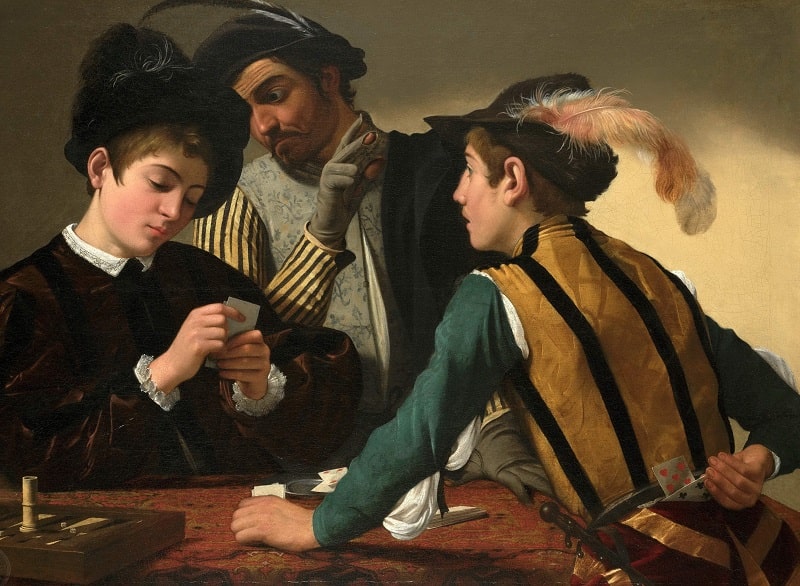
While four of these iconic paintings have found homes in various American and European museums, the journey of the fifth painting is particularly noteworthy. Once held in a private collection, it was acquired by the Qatari authorities, who transformed it into a treasured exhibit for the National Museum, further cementing its legacy in the art world.
“At the Roulette Table in Monte Carlo” – Edward Munch
Edvard Munch’s At the Roulette Table in Monte Carlo is now on display at the artist’s museum in Oslo, Norway. Munch painted this work in 1892, inspired by the captivating and intense atmosphere of the casino, which he experienced during his trip to the South of France. The painting vividly captures the tension and anticipation at the gambling table, where every player awaits their moment of fortune. This timeless portrayal of the roulette experience reflects the enduring appeal of the game, which continues to captivate players today. Modern platforms such as Quigioco Casino offer the same thrill, blending the traditional excitement of roulette with innovative features and immersive gameplay. Just as Munch immortalized the suspense of the roulette table, these platforms keep the spirit of the game alive, making it accessible to enthusiasts around the world in a dynamic, digital format.
“Dogs playing poker” – Cassius Marcellus Coolidge
Artist Cassius Coolidge has created an entire series of paintings called Dogs Playing Poker. The series has 18 canvases, which took the creator 10 years to paint (Coolidge created them from the mid-1900s to the mid-1910s). The entire series was a personal commission from Brown & Bigelow. The paintings were meant to advertise cigars, but added glory to an already popular card game. On the canvases the artist depicted figures of dogs passionately playing poker instead of people. The special atmosphere that always reigns in poker clubs was faithfully represented by Cassius Coolidge. The muzzles of the animals show genuine emotion and some of the dogs even smoke pipes. Glasses of alcoholic beverages can be seen on the gaming tables.
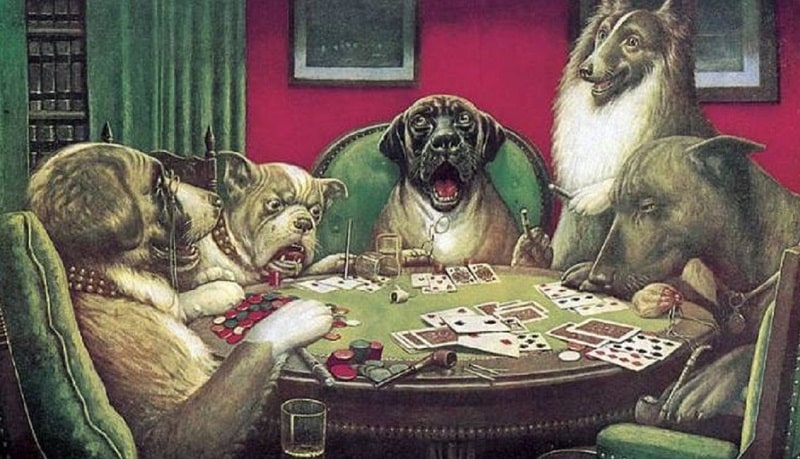
In the United States, Coolidge’s works became hugely popular. They were often copied, used to create vivid parodies. In 2005, an auction was held in New York at which 2 paintings from Coolidge’s collection were sold to a private collector for $590,400.
“Soldiers playing cards” – Fernand Leger
In 1917, the Impressionist painter Fernand Léger created the painting Soldiers Playing Cards. The canvas is in the Cubist style and symbolically depicts three soldiers playing cards. Each soldier is represented in separate parts and looks like a robot. The style of the painting underscores the artist’s commitment to the use of mechanization in World War I. This mechanized representation of human figures reflects the industrialized nature of the war, highlighting how soldiers were often seen as mere cogs in the military machine. Fernand Léger’s painting, Soldiers Playing Cards, is now preserved in the Kreller Muller Museum in Otterlo, the Netherlands. The enduring legacy of Léger’s work continues to captivate audiences today, as it stands as a powerful commentary on the intersection of humanity and technology during times of conflict. In a different vein, modern entertainment has also evolved, with platforms like Platin Casino offering a digital space for card games, echoing the timeless appeal of this classic pastime. Through both historical and contemporary lenses, card games remain a symbol of strategy and leisure, bridging the past and the present in unique ways.
“Queen of the Slot Machines” – Shelley Wilkerson
The painting ‘Gaming Machine Queen’ was painted by contemporary artist Shelley Wilkerson in 2011. The cartoon artwork demonstrates the evolution of gambling entertainment, in which cards and roulette were replaced by slot machines and slots.
-
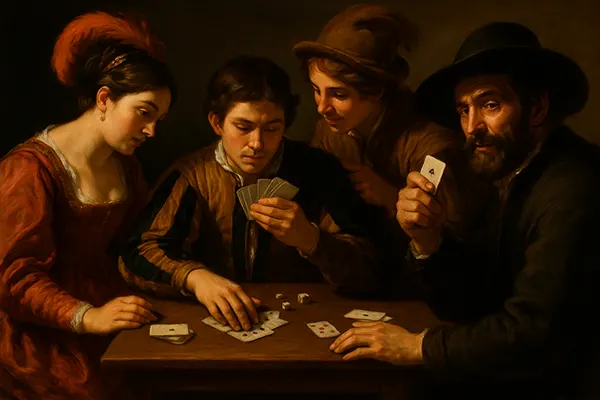 Gambling and Temptation in Baroque Art: How Seventeenth-Century Painters Portrayed Risk
Gambling and Temptation in Baroque Art: How Seventeenth-Century Painters Portrayed RiskThe seventeenth century became a turning point for European visual …
-
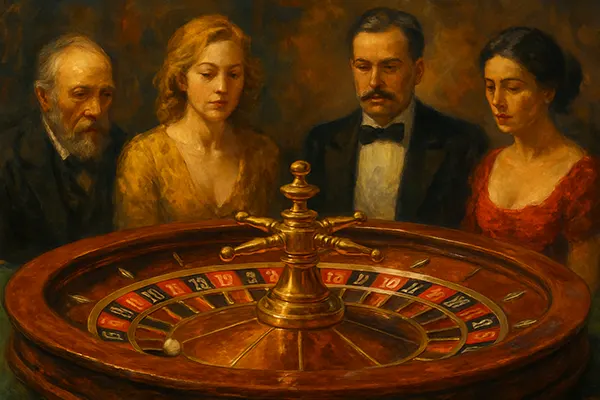 The Art of Roulette: Visual Interpretations of the Wheel of Fortune in Painting and Cinema
The Art of Roulette: Visual Interpretations of the Wheel of Fortune in Painting and CinemaThe roulette wheel has become a lasting artistic symbol that …
-
 Regular and diamond engagement rings
Regular and diamond engagement ringsA ring is one of the oldest pieces of jewellery. …
-
 Architecture of Casinos as the Art of Temptation: How Design Influences Players’ Emotions
Architecture of Casinos as the Art of Temptation: How Design Influences Players’ EmotionsCasinos have long been more than venues for gambling; they …
-
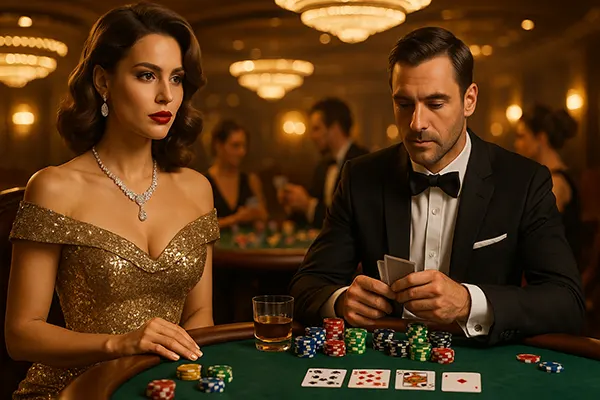 The Image of Casinos in Cinema: From Classics to Modern Films
The Image of Casinos in Cinema: From Classics to Modern FilmsCasinos have long been a backdrop for cinema, embodying luxury, …
-
 Cards, Chips and Dice: How Gambling Symbolism Entered Modern Design and Graphics
Cards, Chips and Dice: How Gambling Symbolism Entered Modern Design and GraphicsSymbols once confined to casinos—card suits, chips, dice, and roulette …
-
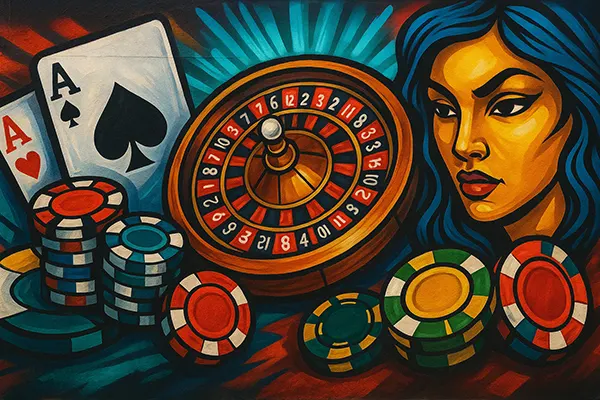 The Image of Casinos in Contemporary Street Art Culture
The Image of Casinos in Contemporary Street Art CultureStreet art has long been a form of social commentary, …
-
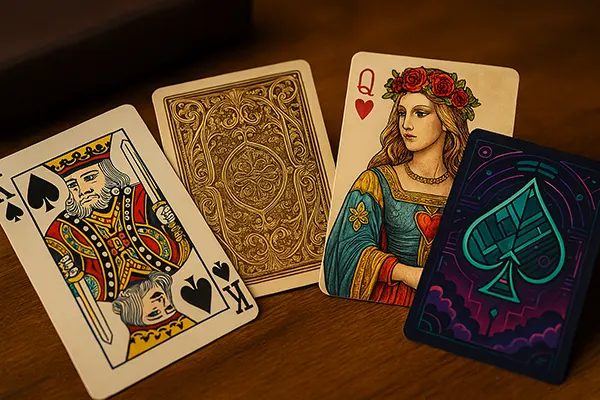 Art of Cards: How Playing Card Design Became a Collectible Art Form
Art of Cards: How Playing Card Design Became a Collectible Art FormPlaying cards have long transcended their initial function as simple …
-
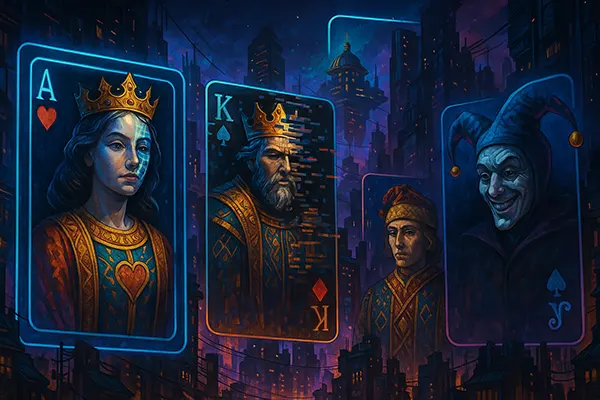 Card Game Imagery in 21st Century Avant-Garde Art: From Digital Painting to NFT
Card Game Imagery in 21st Century Avant-Garde Art: From Digital Painting to NFTThe 21st century has seen a fascinating blend of gambling …
-
 Symbolism of Gemstones in Gambling: From Slot Icons to Poker Folklore
Symbolism of Gemstones in Gambling: From Slot Icons to Poker FolkloreGemstones have long captivated human imagination — not only for …
-
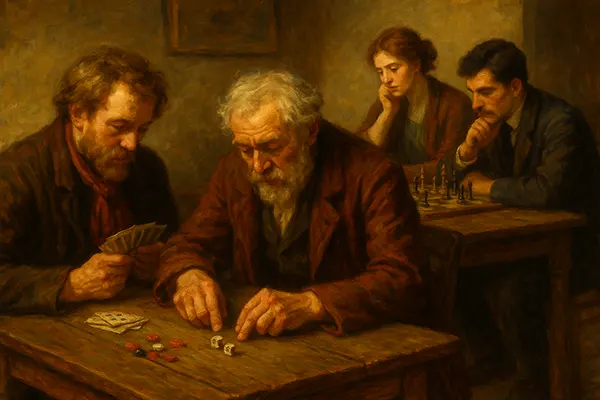 Azart on the Eastern European Canvas: Ukrainian, Polish and Czech Artists on Games and Fate
Azart on the Eastern European Canvas: Ukrainian, Polish and Czech Artists on Games and FateAt the turn of the 19th and 20th centuries, art …
-
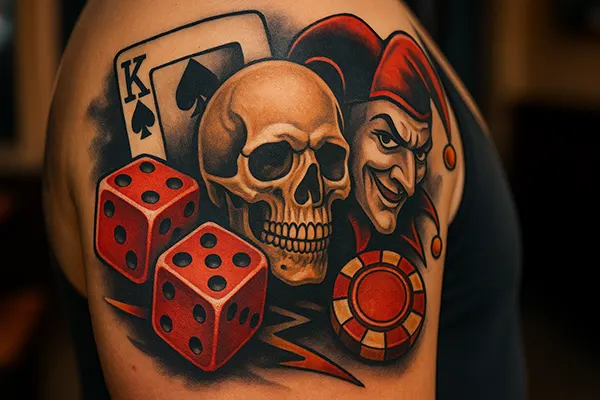 Gambling-Themed Tattoos: Philosophy and Myths Etched in Ink
Gambling-Themed Tattoos: Philosophy and Myths Etched in InkFrom biker clubs to urban subcultures, gambling-themed tattoos have carved …
-
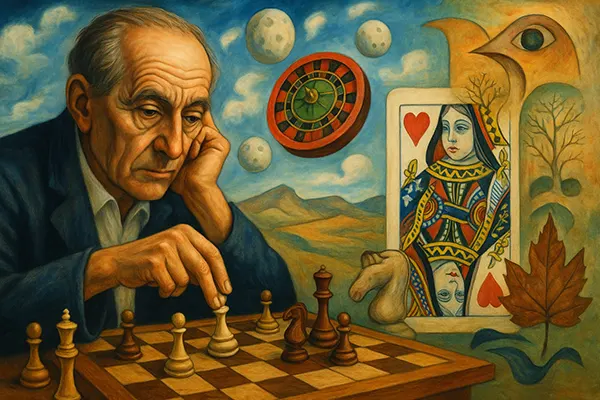 Chance and Modernism: How Surrealists and Dadaists Represented Play and Randomness
Chance and Modernism: How Surrealists and Dadaists Represented Play and RandomnessDuring the early 20th century, the emergence of surrealism and …
-
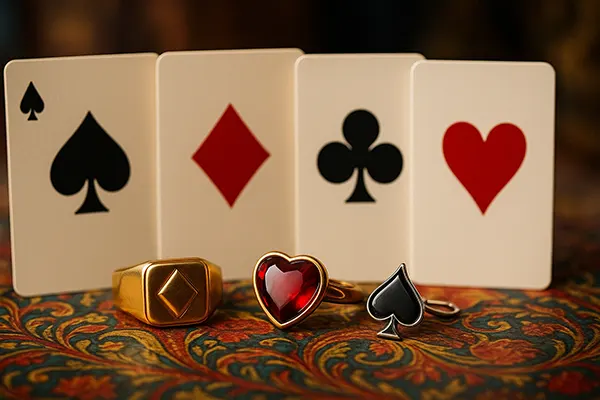 Symbolism of Playing Card Suits in World Cultures: From the Middle Ages to the Present Day
Symbolism of Playing Card Suits in World Cultures: From the Middle Ages to the Present DayThe symbolism of card suits—hearts, spades, clubs, and diamonds—has evolved …
-
 Casino Jewellery Etiquette: From Glitz to Understated Elegance
Casino Jewellery Etiquette: From Glitz to Understated EleganceWhen it comes to visiting a casino, whether physically or …
-
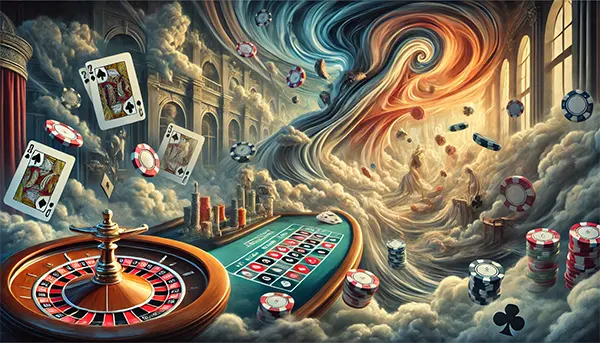 Gambling in Surrealism: The Symbolism of Playing Cards in the Works of Dalí, Magritte, and Others
Gambling in Surrealism: The Symbolism of Playing Cards in the Works of Dalí, Magritte, and OthersSurrealist art is known for its dreamlike, illogical, and symbolic …
-
 Winning with Style: How Jewellers Create Jewellery for Casino Visitors
Winning with Style: How Jewellers Create Jewellery for Casino VisitorsStepping into a casino is more than just a game …
-
 Psychology of Poker: How to Handle Tilt and Avoid Burnout
Psychology of Poker: How to Handle Tilt and Avoid BurnoutPoker is as much a psychological game as it is …
-
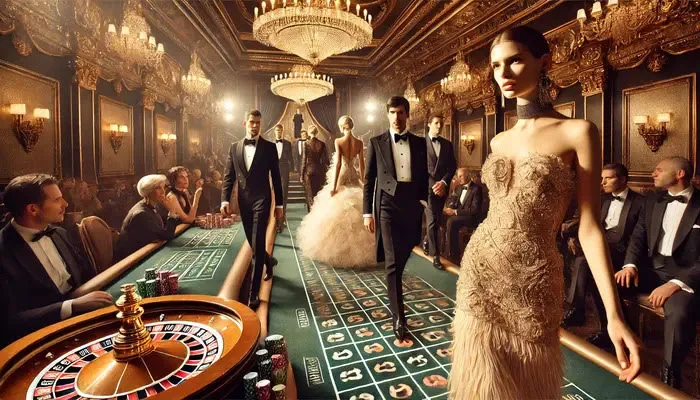 From Casinos to Catwalks: The Intersection of High Fashion and Gambling
From Casinos to Catwalks: The Intersection of High Fashion and GamblingHigh fashion and gambling share a long history of mutual …
-
 Casino Imagery in Postmodern Art
Casino Imagery in Postmodern ArtThe casino, as a symbol of risk, randomness, and fate, …
-
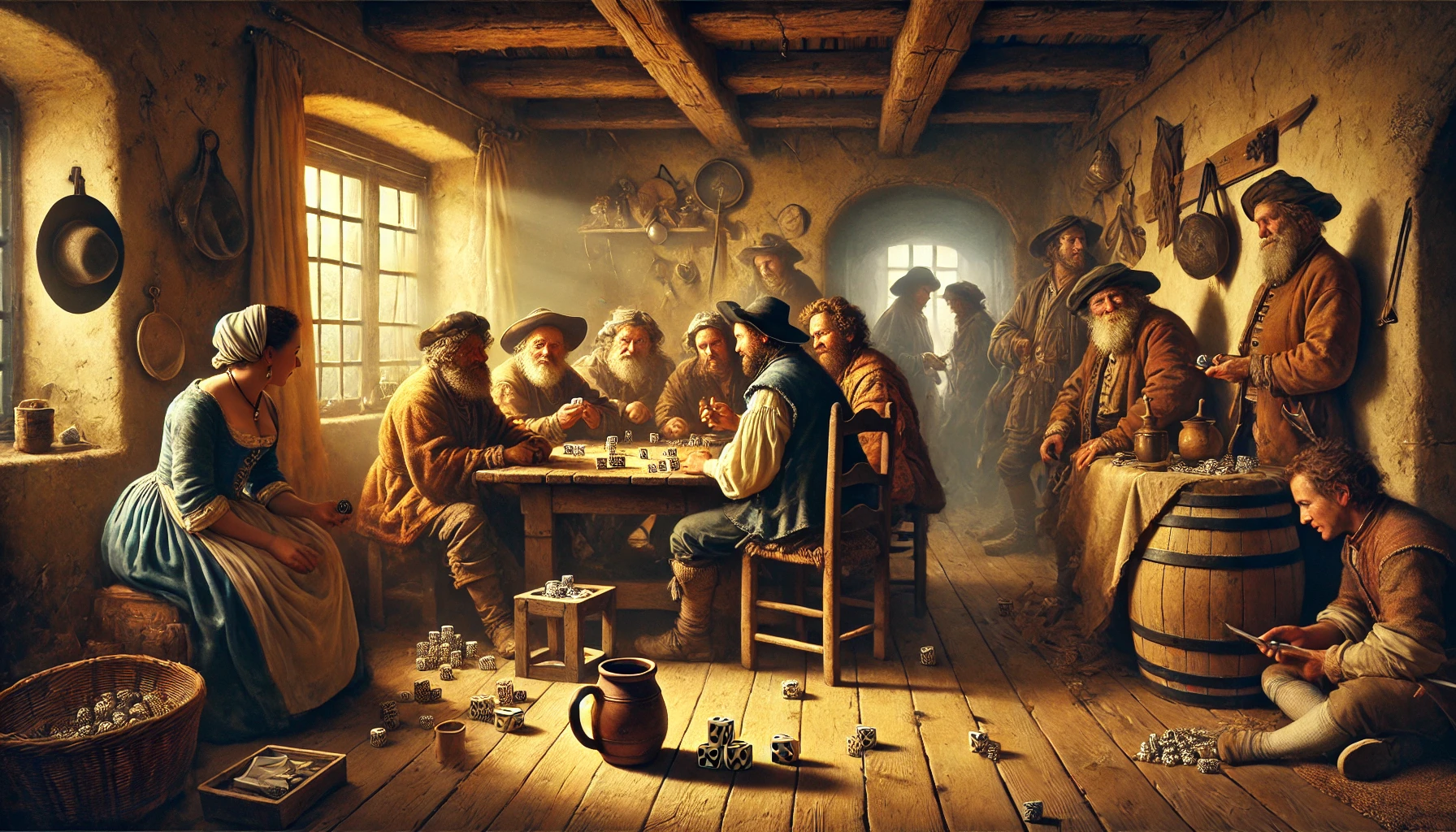 Hidden Symbols of Gambling in Art
Hidden Symbols of Gambling in ArtVisual art often conceals more than meets the eye. One …
-
 Music and Gambling: Songs Inspired by Casinos
Music and Gambling: Songs Inspired by CasinosMusic has always been intertwined with human culture, acting as …
-
 Jewellery as an Investment: Tips and Risks
Jewellery as an Investment: Tips and RisksInvesting in jewellery has long been regarded as both a …
-
 Mystical Properties of Gemstones in Casinos: Myths and Reality
Mystical Properties of Gemstones in Casinos: Myths and RealityFrom the sparkling allure of diamonds to the mystical aura …
-
 How to Choose Jewellery for a Casino Visit: Stylists’ Tips
How to Choose Jewellery for a Casino Visit: Stylists’ TipsWhen planning an elegant casino visit, selecting the right jewellery …
-
 What Colors are Precious Stones and How Do They Affect a Person?
What Colors are Precious Stones and How Do They Affect a Person?Precious stones come in a myriad of colors, each with …
-
 Delhi Purple Sapphire
Delhi Purple SapphirePrecious stones have always been surrounded by secrets and legends, …
-
 The Significance of Precious Jewelry in Different Cultures
The Significance of Precious Jewelry in Different CulturesJewelry has played an integral role in various cultures throughout …
-
 Safety and Display: Managing Jewelry in a Casino
Safety and Display: Managing Jewelry in a CasinoWhen it comes to luxury experiences, few things match the …
-
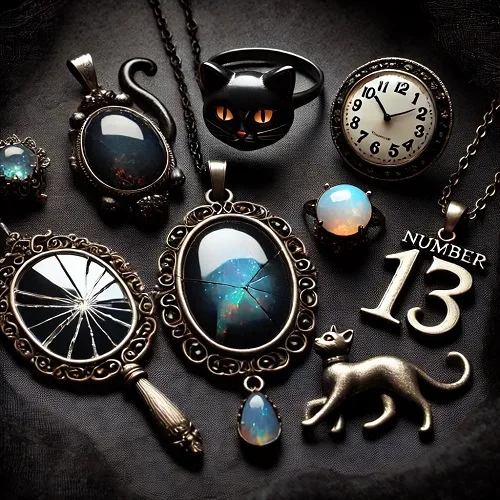 5 Pieces of Jewelry That You Should Never Wear Because They Attract Bad Luck
5 Pieces of Jewelry That You Should Never Wear Because They Attract Bad LuckWearing jewelry has always been more than just an adornment; …
-
 The Glamour of Gambling: How Jewellery Enhances the Casino Experience
The Glamour of Gambling: How Jewellery Enhances the Casino ExperienceWhen you step into the dazzling world of casinos, the …
-
 The Influence of Casino Glamour on Jewellery Trends
The Influence of Casino Glamour on Jewellery TrendsCasinos have always been synonymous with luxury, opulence, and glamour. …
-
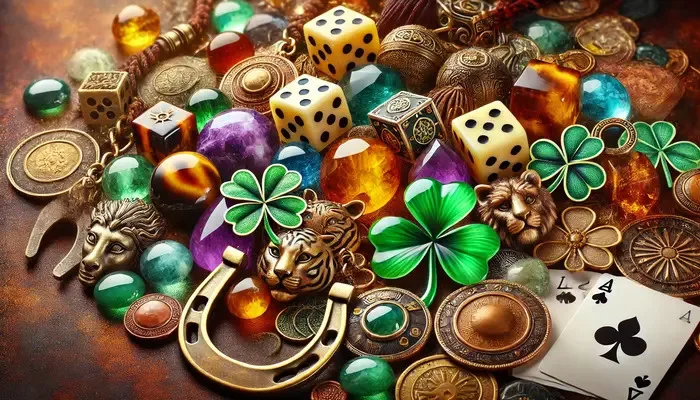 Lucky Charms: The History of Gemstones and Amulets in Gambling
Lucky Charms: The History of Gemstones and Amulets in GamblingIn the world of gambling, luck is an ever-present companion, …
-
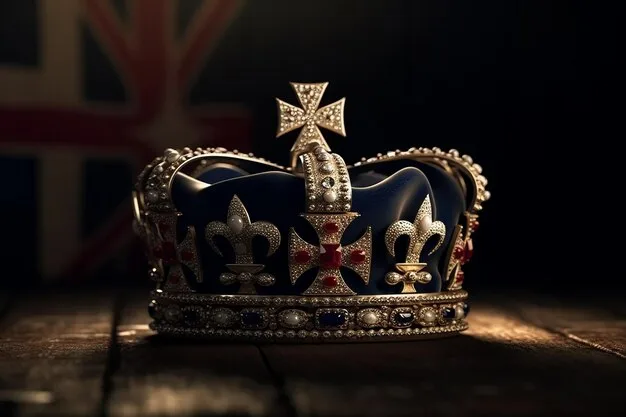 The Most Precious Jewelry in Museums and Private Collections
The Most Precious Jewelry in Museums and Private CollectionsMuseums and private collections worldwide house some of the most …
-
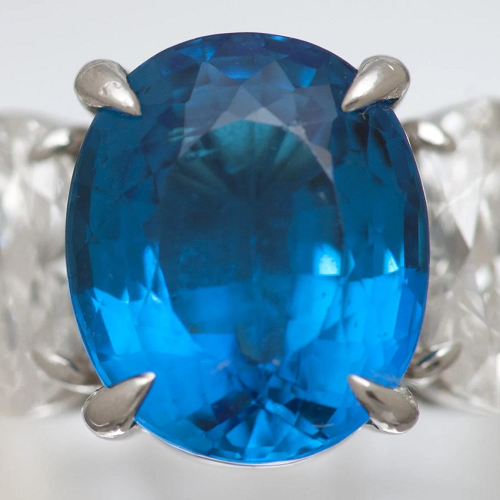 Historical gemstones
Historical gemstonesGemstones have always attracted attention with their beauty and rarity. …
-
 The Top 3 Most Expensive Rings in the World
The Top 3 Most Expensive Rings in the WorldWhen it comes to luxury and opulence, few items can …
-
 Top 5 Most Expensive Earrings in the World
Top 5 Most Expensive Earrings in the WorldThe allure of luxury jewellery is timeless, captivating those who …
-
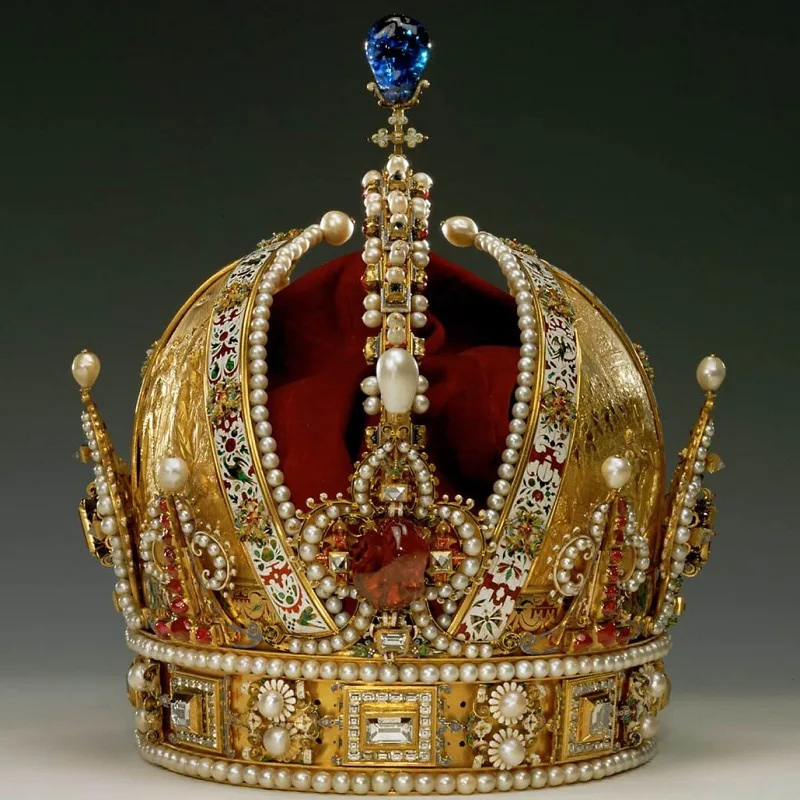 The Epitome of Opulence: The World’s Most Expensive Crowns
The Epitome of Opulence: The World’s Most Expensive CrownsThe allure of crowns, symbols of power, authority, and wealth, …
-
 Luxury Gaming Tokens: Exploring the Top 5 Most Expensive Casino Chips
Luxury Gaming Tokens: Exploring the Top 5 Most Expensive Casino ChipsDiscovering the world of casino chips unveils not only a …
-
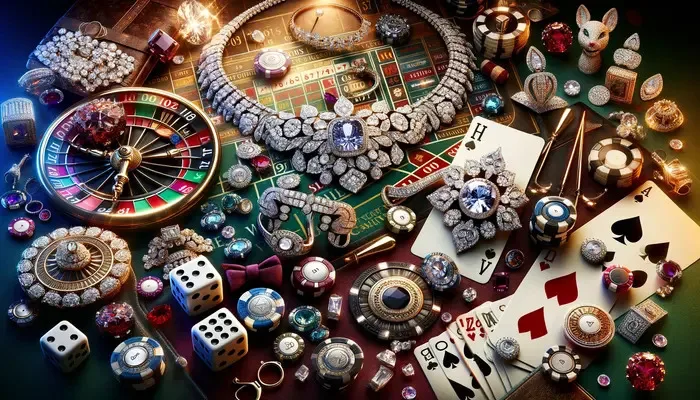 Diamonds and Dice: The Fascinating History of Jewelry as Currency in Casinos
Diamonds and Dice: The Fascinating History of Jewelry as Currency in CasinosIn the opulent halls of casinos, where fortunes are both …
-
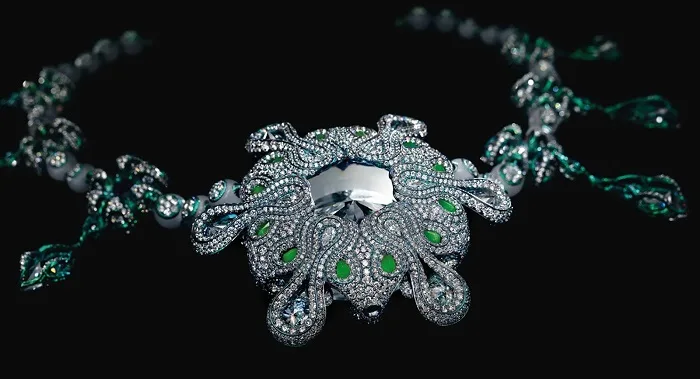 Top 5 Most Expensive Necklaces in the World
Top 5 Most Expensive Necklaces in the WorldThe allure of necklaces, with their intricate designs and luminous …
-
 Cosmic Opulence: The Journey of Meteorite Accessories Through Time
Cosmic Opulence: The Journey of Meteorite Accessories Through TimeDelving into the realm of luxury accessories, the fascination with …
-
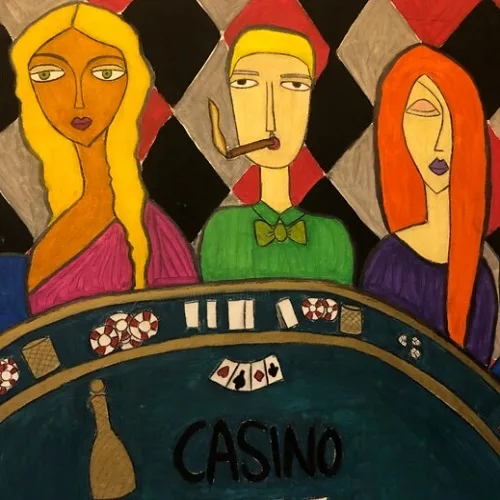 Art and Casinos: A Blend of Luxury and Intrigue
Art and Casinos: A Blend of Luxury and IntrigueThe fusion of art and casinos is a testament to …
-
 The World’s Most Dazzling Wrist: Top 5 Most Expensive Bracelets
The World’s Most Dazzling Wrist: Top 5 Most Expensive BraceletsThe allure of fine jewelry has captivated humanity for centuries, …
-
 Exploring the World’s Most Unusual Gems
Exploring the World’s Most Unusual GemsDelve into the fascinating realm of the world’s most unusual …
-
 Top 3 Most Expensive Men’s Accessories: A Luxurious Overview
Top 3 Most Expensive Men’s Accessories: A Luxurious OverviewIn the realm of luxury, men’s accessories stand as symbols …
-
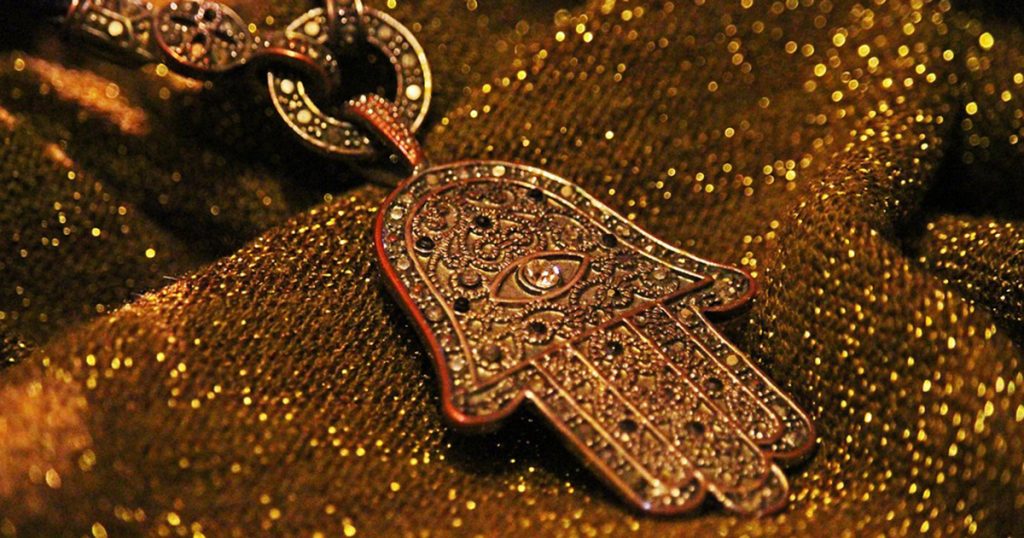 The Glitter of Fortune: World’s Most Expensive Good Luck Talismans
The Glitter of Fortune: World’s Most Expensive Good Luck TalismansSince time immemorial, humans have sought out talismans believed to …
-
 Bringer of Good Luck, Mystical Stone Alexandrite
Bringer of Good Luck, Mystical Stone AlexandriteThe alluring Alexandrite, named after Tsar Alexander II of Russia, …
-
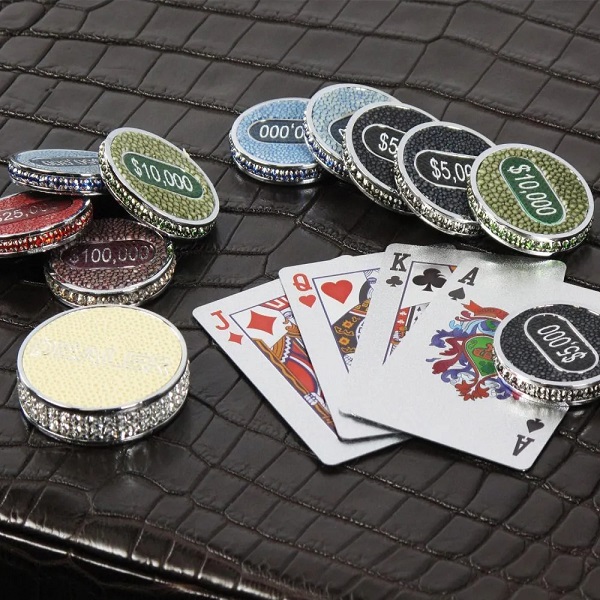 High Rollers and High Art: The World’s Most Luxurious Casino Accessories
High Rollers and High Art: The World’s Most Luxurious Casino AccessoriesCasino gaming is not just about luck and strategy; it’s …
-
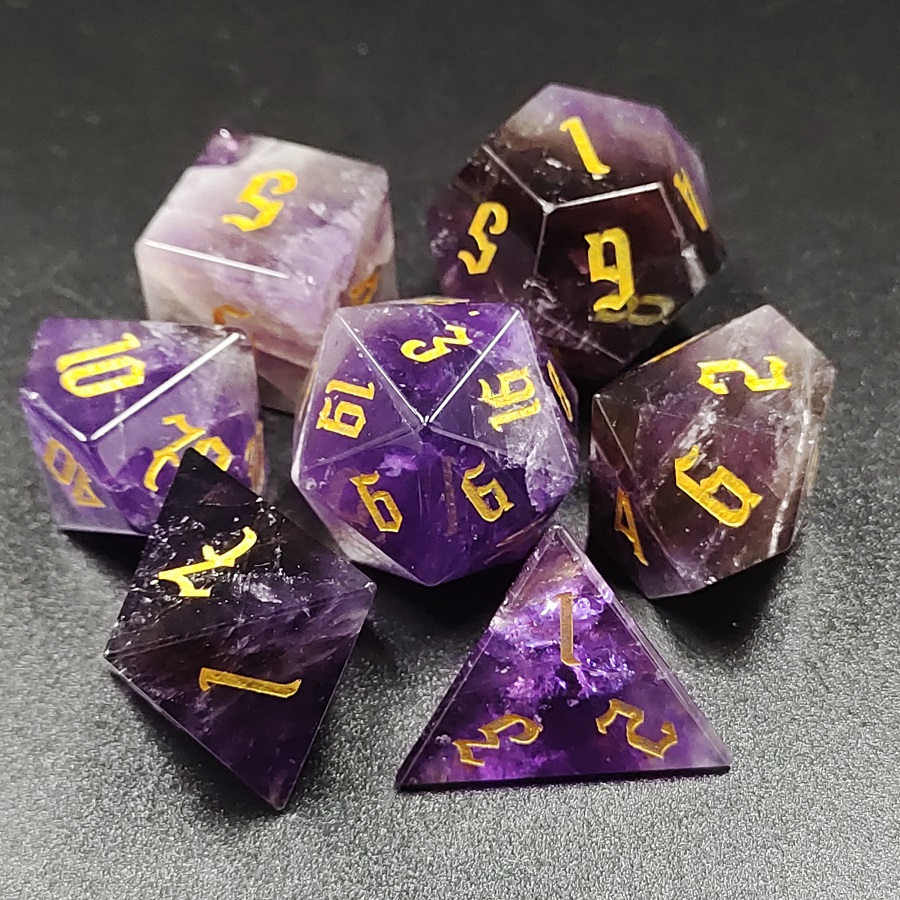 Rolling in Luxury: The World’s Most Expensive Gambling Dice
Rolling in Luxury: The World’s Most Expensive Gambling DiceFor many, dice are simple objects, typically used in board …
-
 Cursed Gems Stories
Cursed Gems StoriesDelve into the captivating yet eerie world of cursed gems, …
-
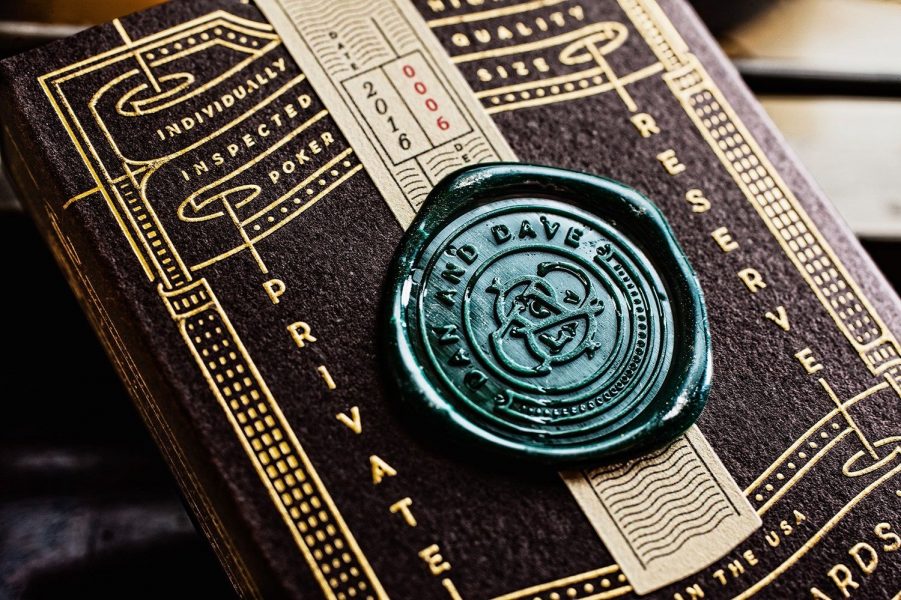 Chasing Aces: A Glimpse Into the World of the Most Expensive and Rare Decks of Playing Cards
Chasing Aces: A Glimpse Into the World of the Most Expensive and Rare Decks of Playing CardsStepping into the world of playing cards, one can easily …
-
 Top 10 most expensive gemstones
Top 10 most expensive gemstonesThere are several varieties of precious stones in the world …
-
 A brilliant investment: what you should have invested your money
A brilliant investment: what you should have invested your moneyInvesting in gemstones
-
 How did jewellery making come about?
How did jewellery making come about?Jewellery has been present in people’s lives since ancient times. …
-
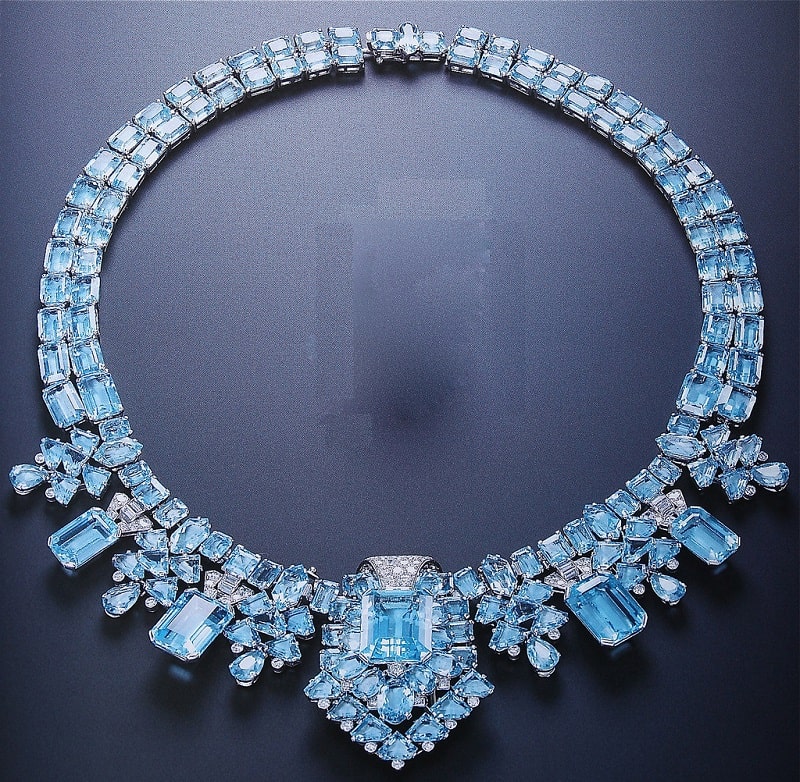 The world’s most expensive celebrity jewellery
The world’s most expensive celebrity jewelleryMovie and music industry stars seek to attract attention in …
-
 Top 5 amulets that are sure to attract money
Top 5 amulets that are sure to attract moneyIncome is not always determined by how much time a …
-
 Most expensive jewellery
Most expensive jewelleryJewellery has always been very expensive. But some of them …
-
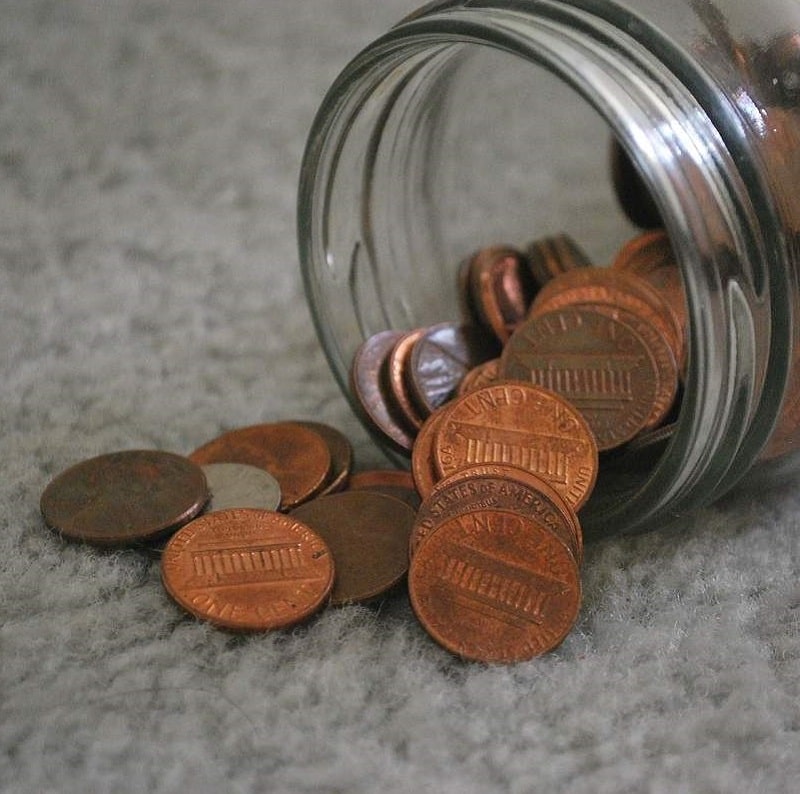 Talismans that bring good luck in the casino
Talismans that bring good luck in the casinoCasino gambling often does not depend on the actions of …
-
 Famous Movie Heroes Watches
Famous Movie Heroes WatchesMany real-world criminals like to wear expensive accessories. So it’s …
-
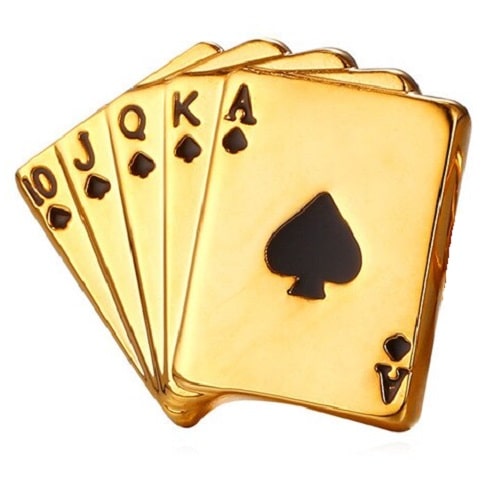 The most expensive poker accessories
The most expensive poker accessoriesPoker has the potential to bring in huge sums of …
-
 The most expensive chains by rappers
The most expensive chains by rappersRappers are known for their penchant for luxury living. Probably …
-
 The most expensive accessories in casino history
The most expensive accessories in casino historyCasinos have long ceased to be a place where people …
